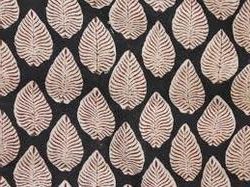
Architectural, Interior Crafts, Arts, Painting, Clay, Terracotta, Pottery, Domestic Arts/Crafts
Mandana / Wall and Threshold Art of Rajasthan
Mandana literally translates to drawing. It has been derived from the word Mandan which means to decorate or beautify. This form of painting is one of India’s oldest forms of tribal art native to the Meena community of Rajasthan and Madhya Pradesh. It is believed to ward off evil and welcome the blessings of gods into the household. This art is painted on walls and floors both inside and outside the building by women. The art form has been passed down from mothers to daughters simply by observing and imitating their mothers.
The artform is associated with various festivals and auspicious occasions of the tribe and hence largely depict their deities. The paintings also include geometric patterns influenced by the architecture of temples. Additionally, floral designs and animal images are also commonly found in the paintings.
While there is no formal teaching of this art form, its process is in fact specific. The walls or floors are first plastered with clay as well as a mixture of cow dung and water, which is the most important component for this style of painting. The pictures are drawn on the walls in Rajasthan and on floors in Madhya Pradesh. Simple tools easily available to the tribe like a date twig brush, a clump of hair, and cotton are used. The paint too is limited to red and white which can be easily made from chalk and brick.
Today the art form is seeing a decline, mainly due to the informal, non literary manner of teaching as well as changes in lifestyles due to modernisation. The clay base that is essential to the art form is not readily available anymore as cemented houses become widespread. Tonk and Sawai Madhopur are some of the few villages that still practice the art in its original form.
The art form has hence evolved to mediums like canvas and fabric. It’s designs have also merged with Rangoli which is also done on the floor to ward off evil and welcome gods and goddesses. Moreover, there has also been a slight shift in the Mandana paintings to include the social experiences of women, since they are solely responsible for creating the artwork.
Gallery
YOUR VIEWS
PRACTITIONERS: INDIA
Access 70,000+ practitioners in 2500+ crafts across India.
BIBLIOGRAPHY
10,000+ listings on arts, crafts, design, heritage, culture etc.
GLOSSARY
Rich and often unfamiliar vocabulary of crafts and textiles.
SHOP at India InCH
Needs to be written.





